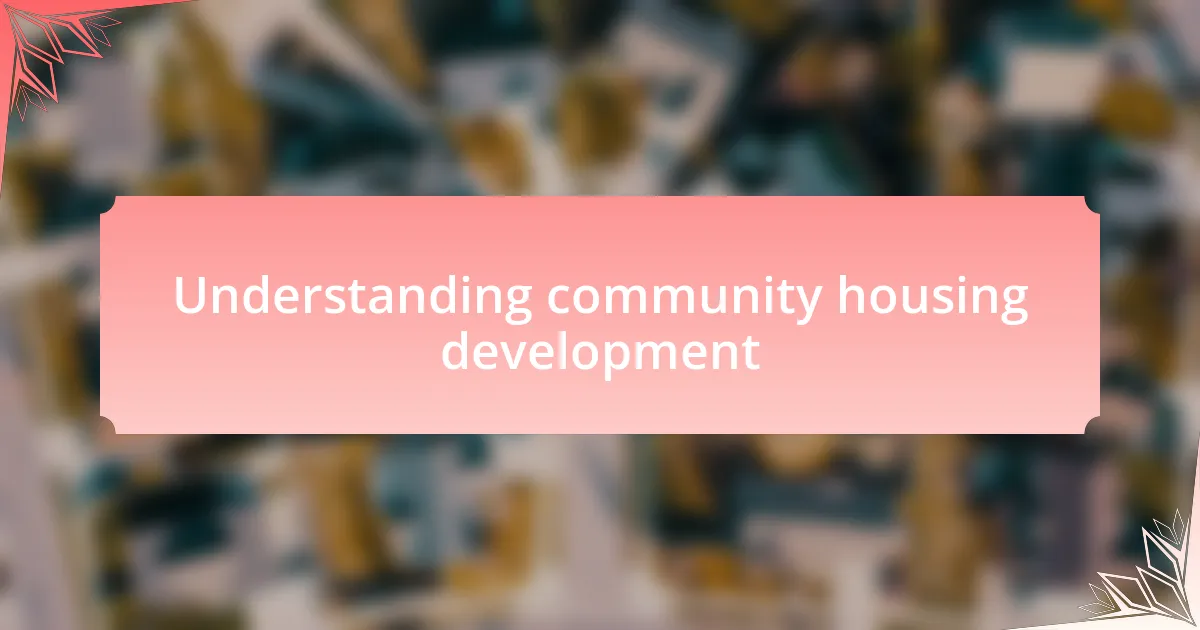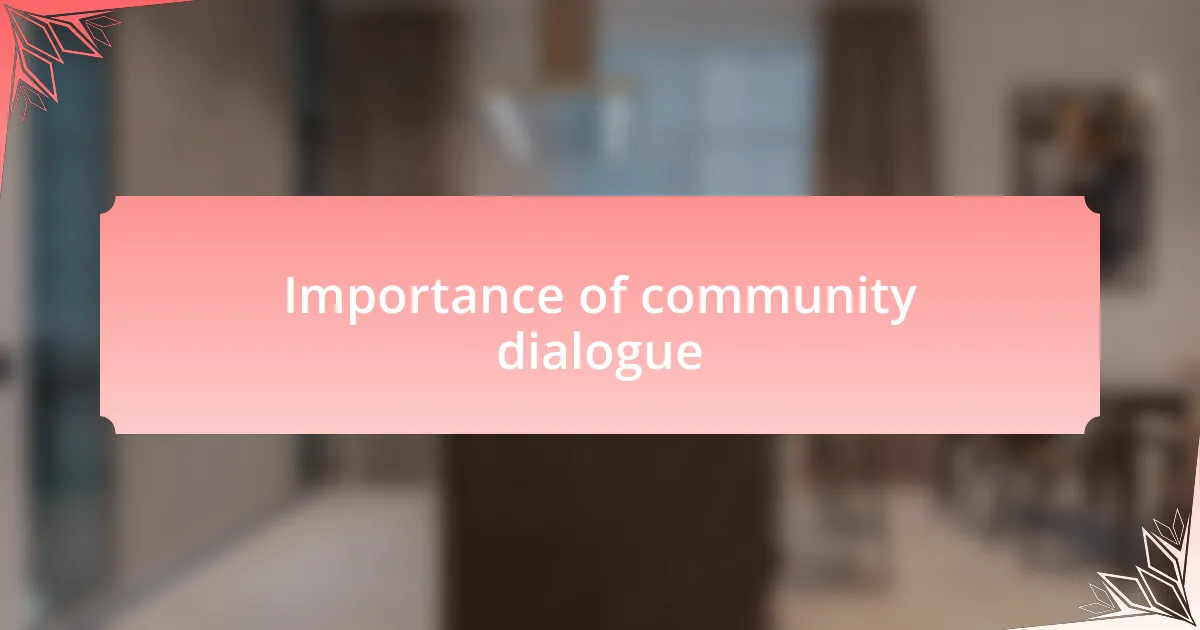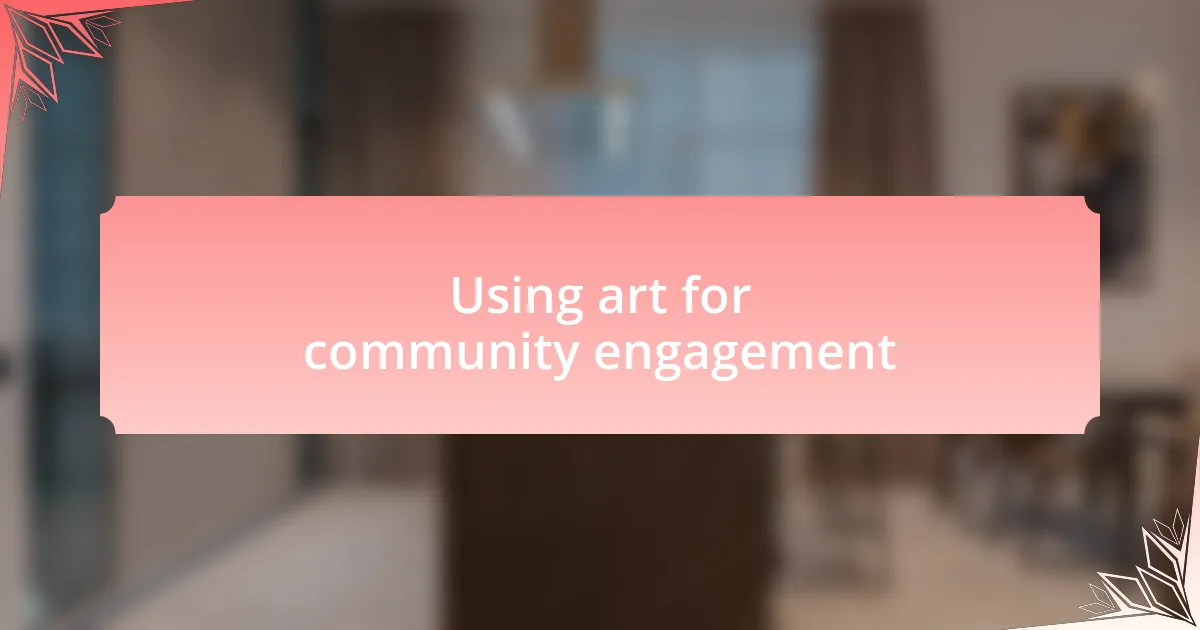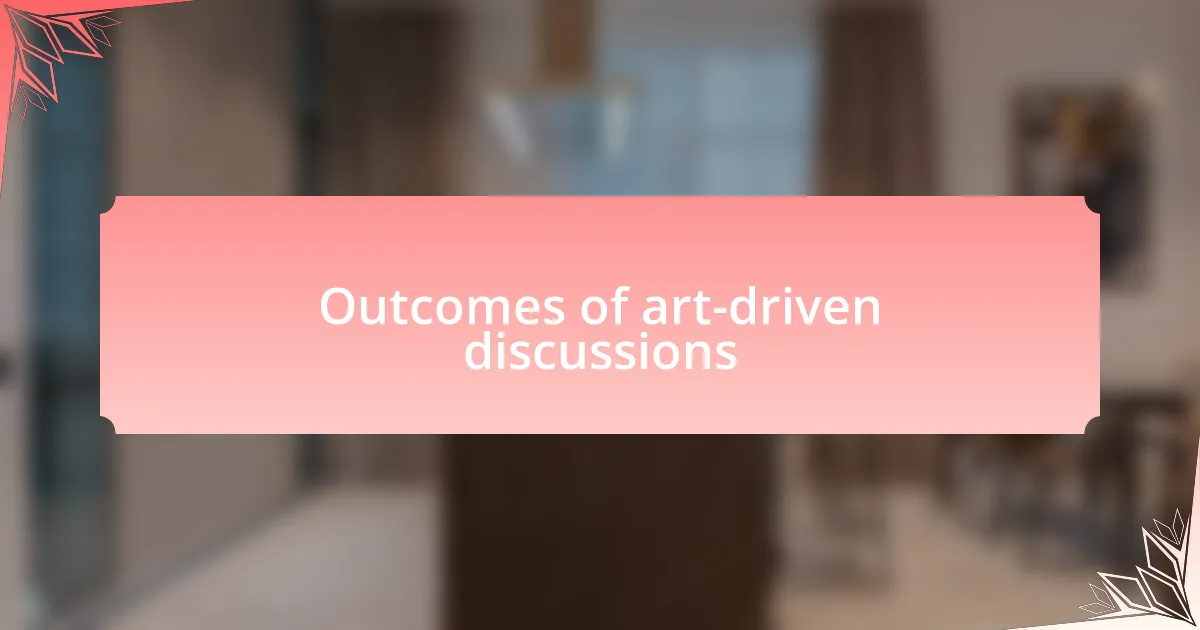Key takeaways:
- Community housing development relies on collaboration among developers, local governments, and residents, emphasizing the importance of inclusive design and cultural sensitivity.
- Active community dialogue fosters trust and creativity, allowing residents to feel like co-creators in the development process, ultimately shaping projects that truly meet their needs.
- Art serves as a powerful tool for community engagement, transforming gatherings into spaces for storytelling, connection, and collective problem-solving.
- Art-driven discussions can lead to transformative outcomes, uniting community members around shared goals, advocating for change, and fostering a sense of belonging.

Understanding community housing development
Community housing development is more than just constructing buildings; it’s about fostering connections and creating spaces where people feel they truly belong. I remember attending a community forum where residents passionately voiced their concerns about the lack of affordable housing options. It struck me how essential it is to listen to the voices within a neighborhood, as they hold the keys to crafting solutions that genuinely reflect their needs.
In my experience, successful community housing development hinges on collaboration, not just between developers and local governments, but also with the residents themselves. One time, during a planning meeting, I witnessed residents present their visions for communal gardens and shared spaces. Their enthusiasm was contagious, highlighting the importance of inclusive design that nurtures both individual and community well-being. Isn’t it fascinating how a simple conversation can spark transformative ideas?
Moreover, understanding the unique demographic and cultural makeup of a community is crucial in shaping housing projects that resonate with residents. I recall a project where the team prioritized cultural elements reflective of the neighborhood’s heritage. It made me realize how essential it is to create housing that doesn’t just provide shelter but also honors and celebrates the diverse identities of its inhabitants. Isn’t it impactful when development celebrates the spirit of a community?

Importance of community dialogue
Community dialogue is foundational in ensuring that housing development mirrors the aspirations and needs of its residents. I recall participating in a neighborhood workshop where we mapped out our dream community. It was inspiring to see how sharing personal stories about living conditions and desires transformed our collective vision into something tangible. How often do we overlook the power of our shared narratives?
Listening to community members fosters trust and encourages engagement, making them active participants in the development process. During a feedback session, residents openly expressed their priorities, which led to changes I never expected. I learned that when people believe their thoughts matter, they contribute creatively, turning ideas into potential realities. Doesn’t it make sense that people should feel like co-creators of their environment?
Moreover, communities thrive on dialogue, allowing diverse perspectives to emerge and be woven into the fabric of development projects. I often think about how a simple question posed by a resident, like “What does safety look like for you?” can spark numerous discussions leading to innovative solutions. Isn’t it amazing how dialogue not only informs but inspires and strengthens our neighborhoods?

Using art for community engagement
Art has a unique way of breaking down barriers and fostering connection within a community. I remember attending a local mural painting event where residents gathered not just to create art, but to share their stories behind each brush stroke. Watching children and elders engage in discussions about their shared experiences rooted in this creative process was beautiful. Isn’t it fascinating how art can transform a simple gathering into a rich tapestry of personal history?
Through workshops that blend art and dialogue, I’ve seen firsthand how participants become more invested in their community’s future. During one such workshop, the act of collaboratively sculpting a piece of public art turned into a platform for discussing safety, accessibility, and aesthetics in our neighborhood. It was profound to witness how collective creativity sparked deeper conversations about our realities. Don’t you think that such experiences highlight the vital role of art in making voices visible?
In my experience, even small art initiatives can stir significant community involvement. I once organized a photograph exhibition where locals showcased images of what “home” meant to them. As viewers walked through the display, I observed them not only admiring the art but also engaging in animated discussions about their lives—one photo brought back memories of childhood, while another ignited plans for future community projects. Doesn’t it remind us that art holds the power to not just reflect, but also to unite and inspire?

Outcomes of art-driven discussions
The outcomes of art-driven discussions are often remarkable and transformative. I vividly recall a community forum where residents painted a large canvas together, each stroke representing their thoughts on local issues. By the end of the event, the mural wasn’t just a piece of art; it became a shared vision, reflecting our collective hopes and aspirations. How incredible is it when creativity can align so many voices toward a common goal?
In another instance, I witnessed a workshop where storytelling and visual art intertwined. Participants created visual narratives about their experiences with housing struggles, which led to a powerful exchange of ideas about solutions. At that moment, it was clear to me that art serves as a bridge not only for expression but also for problem-solving. Isn’t it amazing how these discussions can illuminate paths forward that were previously uncharted?
Lastly, I’ve seen the impact of art-driven discussions in the realm of advocacy. One project involved crafting a community quilt that incorporated individual stories about housing and belonging. As we stitched together fabric and narrative, it sparked conversations about collective action and social change. The quilt became more than an artwork; it emerged as a symbol of unity and commitment. Don’t you find it enlightening how art can fuel both creativity and activism?